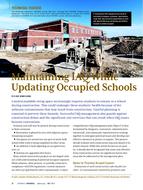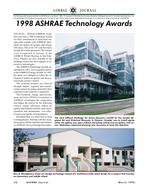Energy simulation programs like DOE-2 and EnergyPlus are tools that have been proven to aid with energy calculations to predict energy use inbuildings. Some inputs to energy simulation models are relatively easy to find, including building size, orientation, construction materials, andHVAC system size and type. Others vary with time (e.g. weather and occupancy) and some can be a challenge to estimate in order to create anaccurate simulation. In this paper, the analysis of occupancy sensor data for a large commercial, multi-tenant office building is presented. It detailsoccupancy diversity factors for private offices and summarizes the same for open offices, hallways, conference rooms, break rooms, and restrooms inorder to better inform energy simulation parameters. Long-term data were collected allowing results to be presented to show variations of occupancydiversity factors in private offices for time of day, day of the week, holidays, and month of the year. The diversity factors presented differ as much as46% from those currently published in ASHRAE 90.1 2004 energy cost method guidelines, a document referenced by energy modelers regardingoccupancy diversity factors for simulations. This may result in misleading simulation results and may introduce inefficiencies in the final equipmentand systems design.
Citation: ASHRAE Conference Papers, Denver, CO
Product Details
- Published:
- 2013
- Number of Pages:
- 8
- File Size:
- 1 file , 710 KB
- Product Code(s):
- D-DE-13-C079


